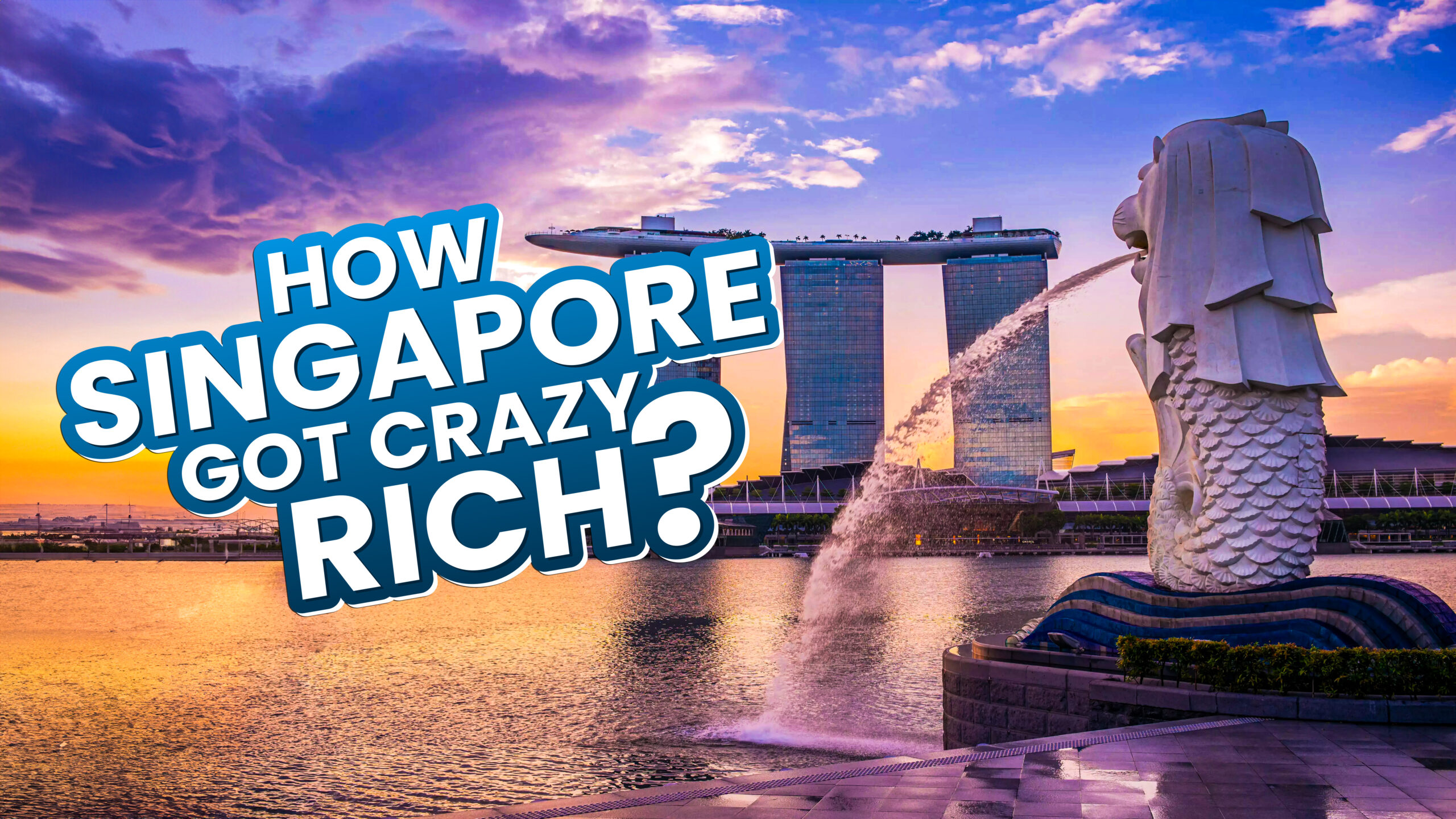When we think of the richest nations in Asia, names like China, Qatar, and the United Arab Emirates often come to mind. However, despite its small size, one nation stands out due to its remarkable economic growth—Singapore. With a GDP per capita of $91.1K, Singapore surpasses even the United States, making it one of the richest countries in the world. This transformation from a struggling island nation to a global economic powerhouse is nothing short of extraordinary. Let’s explore the factors that contributed to Singapore’s incredible success.
The Strategic Location and Colonial Roots
Singapore’s journey to wealth began over 200 years ago during the British colonial era. In 1819, the British established a trading post on the southern tip of the Malay Peninsula. This location became a crucial stopover for the British East India Company’s Southeast Asian trade routes. However, it wasn’t until the opening of the Suez Canal 50 years later that Singapore truly flourished as a significant seaport, with trade volumes doubling.
For nearly a century, Singapore thrived as a prosperous British outpost, similar to Hong Kong. However, the political landscape changed in 1965 when Singapore gained independence. This newfound freedom brought both opportunities and challenges, as the young nation had to navigate its way through economic instability and high unemployment.
Foreign Investment and Economic Reforms
Singapore’s government quickly realized that attracting foreign investment was key to economic growth. Despite initial fears that the People’s Action Party might nationalize foreign investments, the government instead focused on creating a stable and reliable environment for foreign businesses. Today, over 70% of Singapore’s total output comes from foreign companies, particularly in the banking, shipping, and oil industries.
The government also introduced favorable taxation and banking privacy laws, which positioned Singapore as a financial center similar to Switzerland. Its strategic location at the crossroads of major shipping routes connected Asia’s rising economic powers with the West, attracting massive foreign investments. This influx of capital was no accident; it was part of a well-thought-out plan by the Singaporean government to transform the nation into a global economic hub.

Education and Infrastructure
Understanding the limitations of its small landmass, Singapore’s government invested heavily in education and infrastructure. The aim was to create a knowledgeable workforce that could contribute to the economy through services rather than raw production. For instance, while Singapore couldn’t compete as a major oil producer, it excelled in refining oil. Today, Singapore is one of the world’s top three oil trading and refining hubs, with a crude oil refining capacity of 1.5 million barrels per day.
Moreover, Singapore realized that its domestic service sector alone couldn’t sustain the economy. Therefore, it positioned itself as a neutral base for financial service companies throughout Southeast Asia. The rise of Singapore as an intermediary in the global economy underscores the importance of service industries in modern economic success.
A Hub for Tourism and Transit
Despite its natural beauty and cultural diversity, Singapore faced challenges in becoming a major tourist destination. However, the government turned this challenge into an opportunity by transforming Singapore into a global stopover for travelers. Changi Airport, one of the world’s most beautiful airports, plays a significant role in this strategy by serving as a transit point for travelers moving between major international destinations like China, Japan, India, Australia, and the Middle East.
A Balanced Economic Approach
Singapore’s economic model is often seen as a blend of capitalist and socialist policies. On the capitalist side, Singapore offers very low income tax rates, with the highest bracket at around 22%. However, the government also imposes heavy taxes on car ownership to discourage its use and promote public transport. This system not only reduces urban congestion and pollution but also channels the revenue into developing public transport infrastructure.
Moreover, Singapore avoids being a strict authoritarian state by not banning cars outright. Instead, it uses a capitalist approach to manage supply and demand. The high cost of owning a car in Singapore is not due to import tariffs or currency issues but because of the registration system. This approach ensures that only highly productive members of society can afford cars, thereby reducing the overall number of vehicles on the road.
Economic Stability Through Strategic Governance
Singapore’s economic success is not just the result of its strategic location and opportune timing but also the result of deliberate efforts by its government. The nation’s leadership implemented the right mix of economic policies, which have allowed Singapore to thrive despite its lack of natural resources. For instance, the government’s focus on maintaining a stable and secure environment for foreign investments has been instrumental in attracting multinational companies to Singapore.

Comparing Singapore to Other Global Powerhouses
Singapore’s economic journey is often compared to other global cities like New York and Hong Kong. Despite its small size, Singapore boasts a GDP per capita higher than that of the UK, the US, and France. In fact, Singapore ranks as the number one country in Asia and the fifth richest country in the world, following Luxembourg, Ireland, Norway, and Switzerland.
Over the past sixty years, Singapore has evolved from a colonial trading post into a financial hub, inspiring other nations to develop strong, high-tech economies. The nation’s success is built on strategic economic policies, investments in infrastructure, and a strong focus on education and technology.
Balancing Growth with Social Cohesion
Despite its remarkable achievements, Singapore faces several challenges in the years ahead. Wealth accumulation has introduced new issues, such as rising housing costs and increased living expenses. Additionally, the country struggles with an aging population, which could strain workforce growth and government expenditures.
Moreover, Singapore’s growth strategy has involved attracting foreign labor, leading to concerns that these workers are occupying too many coveted positions. While statistical data indicates a reduction in inequality, many residents perceive disparities differently.
Conclusion
Singapore’s rise to wealth and development is a perfect concoction of strategic location, well-thought-out policies, disciplined governance, and consistent industrialization. The nation serves as an exemplary model of development, demonstrating how careful planning and strategic investments can lead to remarkable economic success. While replicating Singapore’s success may be challenging for other nations, the lessons learned from its journey can certainly inspire and guide future economic strategies.
When you plan your next trip, consider stopping by this island nation of the Merlion to witness its success firsthand. Singapore’s story is not just about economic prosperity but also about resilience, adaptability, and visionary leadership—a story that continues to inspire the world.







